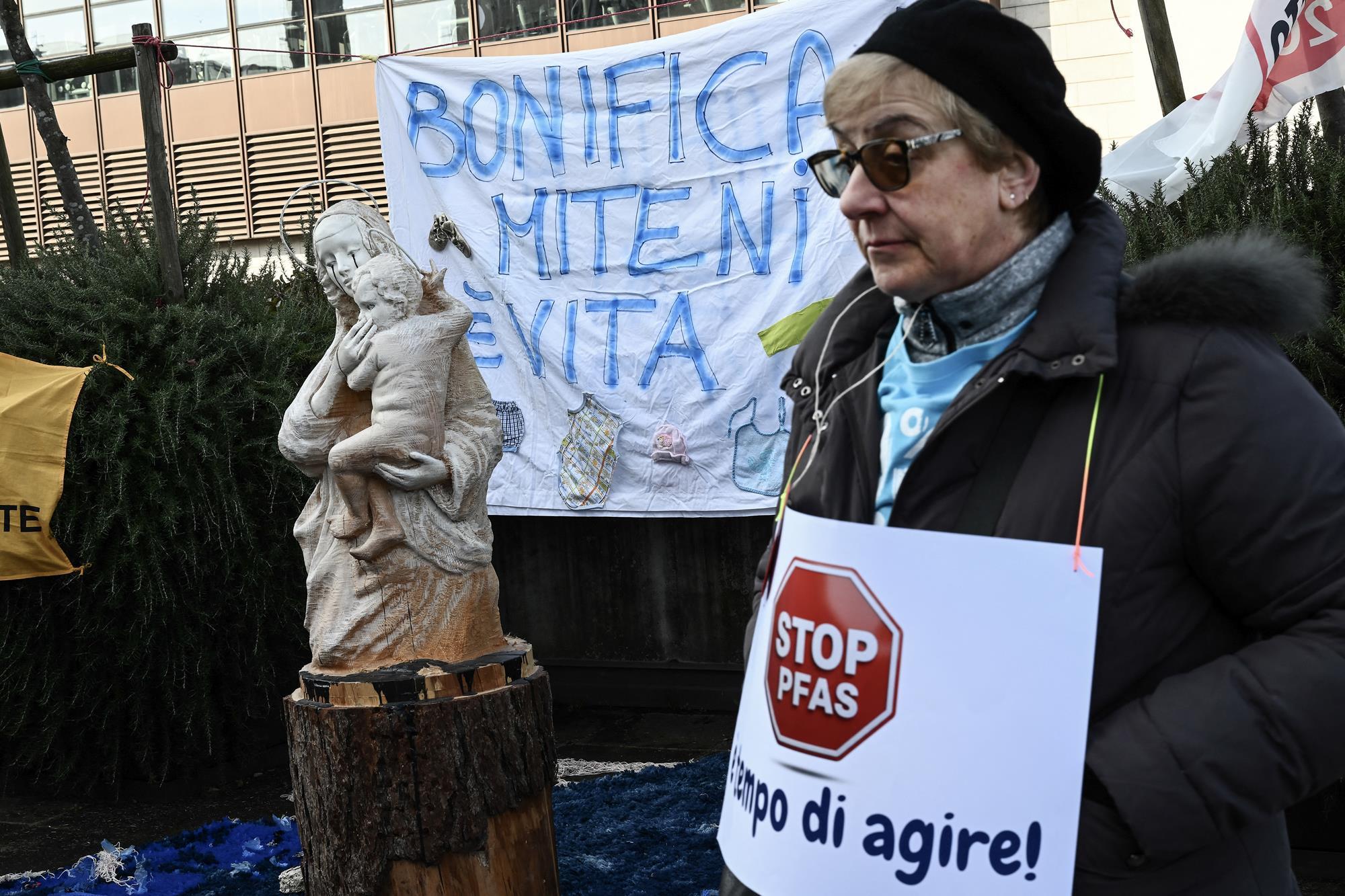11 executives jailed over Italian PFAS pollution – Chemistry World

Italian Court Convicts Executives Over PFAS Groundwater Pollution
Background and Case Overview
An Italian court has sentenced 11 executives to prison for their roles in groundwater pollution caused by per- and polyfluorinated alkyl substances (PFAS) discharged from the Miteni fluorochemicals plant in Trissino, Italy. The plant, operational since the 1960s, has been linked to widespread environmental contamination affecting hundreds of thousands of people in the surrounding region.
Miteni Plant History and Ownership
- Initially operated independently.
- Later became a subsidiary of Japan’s Mitsubishi.
- Sold in 2009 to Luxembourg-based International Chemical Investors Group (ICIG).
- Closed in 2018 following bankruptcy.
Investigation and Legal Proceedings
- 2013: Veneto regional authorities launched an investigation identifying the Miteni plant as the source of PFAS contamination in groundwater and soil.
- Government prosecutors charged Miteni with improper treatment of PFAS-containing wastewater and attempts to conceal the pollution.
- Environmental organizations, including Greenpeace, and local citizen groups joined the lawsuit.
- Executives from Miteni, Mitsubishi, and ICIG were convicted and sentenced to prison terms ranging from 2 years and 8 months to 17 years and 6 months.
- The court ordered Mitsubishi, ICIG, and the convicted individuals to pay approximately €57 million (£49 million) in damages.
Emphasis on Sustainable Development Goals (SDGs)
This case highlights critical issues related to several United Nations Sustainable Development Goals:
- SDG 6: Clean Water and Sanitation – The contamination of groundwater with toxic PFAS chemicals severely undermines access to safe and clean water for communities in the Veneto region.
- SDG 3: Good Health and Well-being – Exposure to PFAS pollutants poses significant health risks to hundreds of thousands of people, threatening their well-being.
- SDG 12: Responsible Consumption and Production – The failure of corporate entities to manage hazardous waste responsibly demonstrates the need for sustainable industrial practices.
- SDG 16: Peace, Justice, and Strong Institutions – The judicial response, including prosecution and penalties, reflects the importance of enforcing environmental laws and corporate accountability.
- SDG 17: Partnerships for the Goals – Collaboration between government authorities, environmental NGOs, and local communities was essential in addressing the pollution and pursuing justice.
Conclusion
The Miteni case serves as a significant precedent in environmental justice, emphasizing the necessity of aligning industrial activities with the Sustainable Development Goals to protect ecosystems and public health. It underscores the importance of vigilant regulatory oversight, corporate responsibility, and active civic engagement to achieve sustainable development and prevent environmental harm.
1. Sustainable Development Goals (SDGs) Addressed or Connected
- SDG 6: Clean Water and Sanitation
- The article discusses groundwater pollution caused by PFAS chemicals, directly impacting water quality and availability.
- SDG 3: Good Health and Well-being
- Pollution affecting hundreds of thousands of people poses significant health risks, linking to this goal focused on reducing health hazards.
- SDG 12: Responsible Consumption and Production
- The improper treatment and discharge of hazardous chemicals reflect unsustainable industrial practices addressed under this goal.
- SDG 16: Peace, Justice and Strong Institutions
- The legal accountability and prosecution of executives highlight the role of justice and strong institutions in enforcing environmental laws.
2. Specific Targets Under Those SDGs
- SDG 6: Clean Water and Sanitation
- Target 6.3: Improve water quality by reducing pollution, eliminating dumping, and minimizing release of hazardous chemicals and materials.
- SDG 3: Good Health and Well-being
- Target 3.9: Substantially reduce the number of deaths and illnesses from hazardous chemicals and air, water, and soil pollution and contamination.
- SDG 12: Responsible Consumption and Production
- Target 12.4: Achieve environmentally sound management of chemicals and all wastes throughout their life cycle.
- SDG 16: Peace, Justice and Strong Institutions
- Target 16.3: Promote the rule of law at the national and international levels and ensure equal access to justice for all.
3. Indicators Mentioned or Implied in the Article
- Indicator for SDG 6.3
- Proportion of wastewater safely treated before discharge (implied by the failure to properly treat PFAS-containing wastewater).
- Levels of PFAS pollutants in groundwater and soil (implied by the investigation identifying contamination).
- Indicator for SDG 3.9
- Number of people affected by hazardous chemical pollution (hundreds of thousands affected as mentioned).
- Incidence rates of illnesses related to chemical exposure (implied health impact).
- Indicator for SDG 12.4
- Number of companies complying with environmental regulations on chemical waste management (implied by legal action against Miteni and parent companies).
- Indicator for SDG 16.3
- Number of prosecutions and convictions related to environmental crimes (executives jailed and companies fined).
- Amount of damages paid for environmental harm (€57 million ordered).
4. Table of SDGs, Targets, and Indicators
| SDGs | Targets | Indicators |
|---|---|---|
| SDG 6: Clean Water and Sanitation | Target 6.3: Improve water quality by reducing pollution and minimizing hazardous chemical release. |
|
| SDG 3: Good Health and Well-being | Target 3.9: Reduce deaths and illnesses from hazardous chemicals and pollution. |
|
| SDG 12: Responsible Consumption and Production | Target 12.4: Environmentally sound management of chemicals and wastes. |
|
| SDG 16: Peace, Justice and Strong Institutions | Target 16.3: Promote rule of law and ensure equal access to justice. |
|
Source: chemistryworld.com








